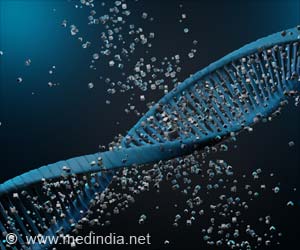The circadian clock is found to pose a major impact on the response to cancer chemotherapy, based on the nucleotide excision repair mechanism of the cell.
A new study signifies the importance of considering the time of the day when cancer patients receive chemotherapy, in order to achieve a higher chances of survival.
The study, conducted by the University of North Carolina at Chapel Hill, has suggested that treatment is most effective at certain times of day because that is when a particular enzyme system - one that can reverse the actions of chemotherapeutic drugs - is at its lowest levels in the body.The study, which was performed in mice, could also have implications for the prevention of new cancers.
The enzyme system implicated - called nucleotide excision repair- repairs many types of DNA damage that come not just from chemotherapy but also from the ultraviolet rays of the sun.
Thus, by understanding the cyclical nature of this system, physicians may be able to pinpoint when it is most crucial for people to protect themselves from sun exposure to minimize their risk of skin cancer.
"Timing is everything, and here we have molecular data showing why this is especially true with regard to cancer. By hitting cancer cells with chemo at a time when their ability to repair themselves is minimal, you should be able to maximize effectiveness and minimize side effects of treatment," said senior study author Aziz Sancar, M.D., Ph.D., a member of the UNC Lineberger Comprehensive Cancer Center and Sarah Graham Kenan professor of biochemistry and biophysics in the UNC School of Medicine.
This study offers the first solid evidence that the daily oscillations of the cell's repair machinery can affect the potency of cancer drugs.
Advertisement
Every single cell in the body - whether from the kidney, liver or heart - has its own internal clock, and each of these are synchronized and coordinated by one master clock, located in a particular cluster of neurons in the brain.
This damage is usually repaired by a process called nucleotide excision repair, which cuts out and replaces sections of damaged DNA.
The researchers studied the behaviour of the repair machinery in cerebrum or brain tissue of mice over the course of a day, and found that the ability to repair damage was at a minimum in the early morning and reached a maximum in the evening hours.
They then looked at each of the six components that make up the repair machinery and found that the levels of one of them - the enzyme XPA - rose and fell in synchrony with the oscillations of the circadian clock.
Thus, the researchers have shown that the cell's ability to repair damage is linked to the circadian clock, and that this daily oscillation is ultimately due to changes in the levels of one particular enzyme at different times of day.
The study is set to appear this week in the online early edition of the Proceedings of the National Academy of Sciences.
Source-ANI
PRI













